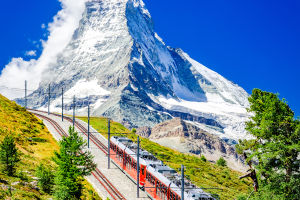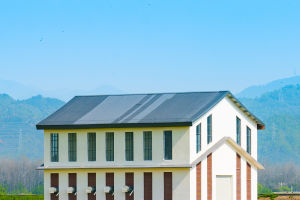Do you remember the outdoor picnic that took the internet by storm last year? With just a square cloth, a patch of green grass, a few rays of sunshine, a long floral dress, a smattering of fruit, and a baguette, it was as if you were transported to Paris, France.
Surprisingly, this type of lifestyle is becoming increasingly popular around the world.
Similar topics have recently gained popularity online, with related videos garnering 4 billion views and creating an idyllic utopia on the internet, bringing people both visual and spiritual solace, known as "the healing method of contemporary youth." All the healing scenery revolves around one word: Cottagecore.
If you're unfamiliar with Cottagecore, it's essentially an idyllic lifestyle. Cottagecore is a nostalgic aesthetic movement that revolves around a back-to-nature lifestyle, combining various traditional skills and crafts in a mountain farmhouse setting. However, it's not an imitation of old-fashioned country life, but rather a new-style rustic aesthetic that uses modern elements to express vintage scenes, focusing on a fairytale sense of surreal atmosphere.
The pandemic was the first wave that revived Cottagecore. When cities were rapidly shutting down, people had enough time to contemplate the relationship between people and nature. With negative news constantly bombarding them, people tried to find a source of happiness to heal their bodies and minds during quarantine and sought a place of peace of mind away from reality. Thus, Cottagecore was born.
First and foremost, the Cottagecore aesthetic promotes a "self-sufficient" way of life. Nowadays, highly developed urban life with its division of labour allows us to "outsource" every aspect of our lives to professionals. For example, among young people, the frequency of ordering take-out is increasing, and the kitchen has been reduced to little more than decoration. Even household chores can be outsourced, with brooms and mops laid off en masse.
The core concept of "Garden Life" - Do It Yourself - aims to teach you how to regain a sense of control in your life, from making bread and homemade fruit to tending a garden (even if you don't have one, you can grow vegetables on your balcony) or even picking up knitting with online tutorials.
However, it's important to remember that the idyllic aesthetic of Cottagecore belongs only to the city, not to the countryside. The reality of idyllic life is far from walking the dog and hiking in the countryside, frolicking with sheep, and living in perfect harmony with nature. Even in highly developed economies and highly mechanized European and American farms, professional farmers face wind, rain, snow, and sun daily, with red faces that are not the result of blushing.
You see, small strawberries and cabbage don't just grow from seeds waiting for you to pluck them. There are over ten planting processes involved, and if you don't have a little patience, the fruits of your labour will perish in your hands. The countryside represents a closer connection between people. For young people who grew up in the "concrete jungle" and the internet era, their perception of their hometown and land is becoming increasingly blurred.
Thus, the "rural aesthetic" on the internet meet their needs for "homeland" and "community" in the countryside, where the pace of life is much slower, people are closer, and the lifestyle is more sustainable. There are no viruses to worry about, nor is there a need to worry about supply chain disruptions.
The glorified "idyll" is a sedative used by the urban middle class as a healing agent for trauma - a "quiet time" that is always sought but never achieved. But what's wrong with fantasy? After all, as a kind of fantasy, "living in the countryside" means living somewhere else.


